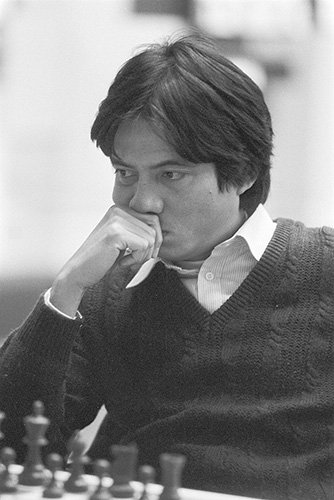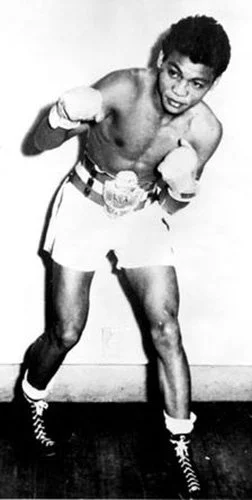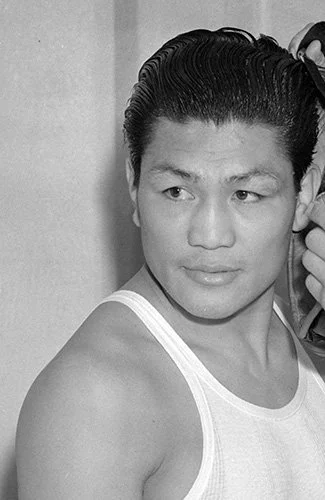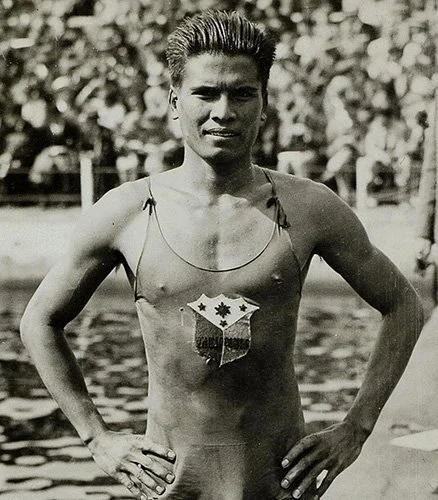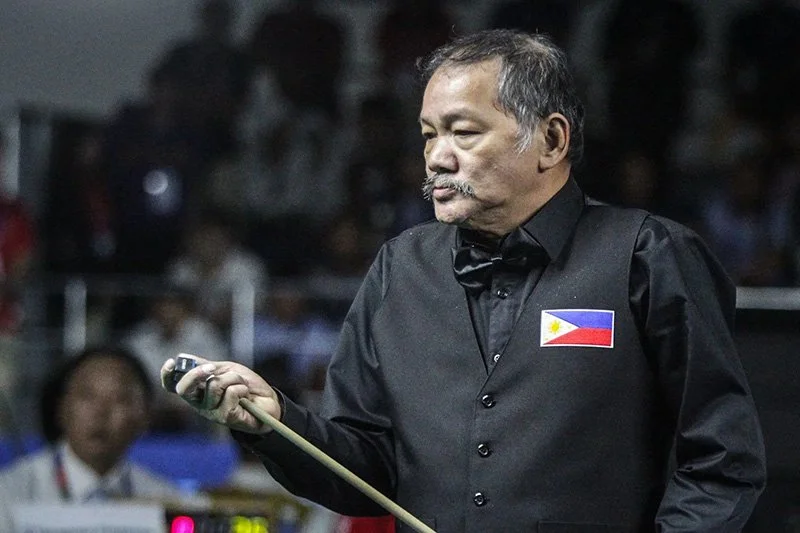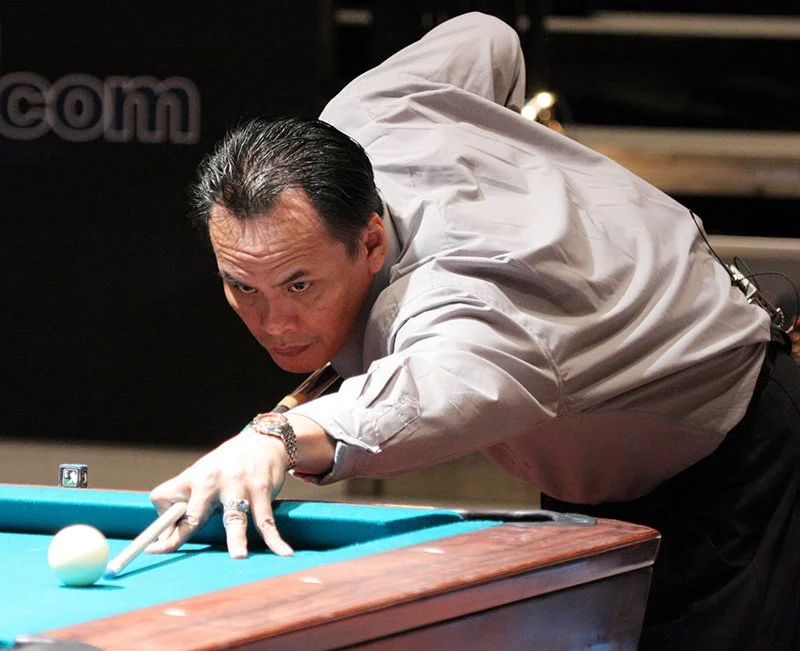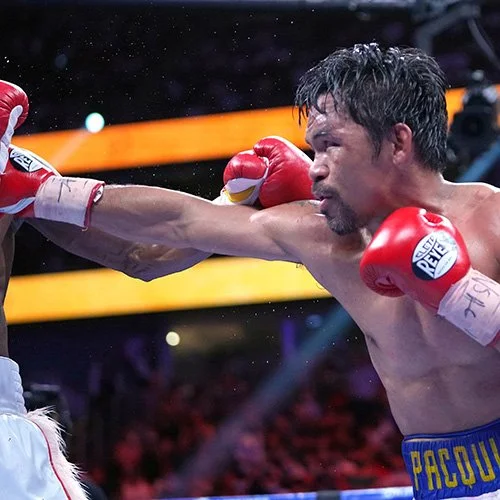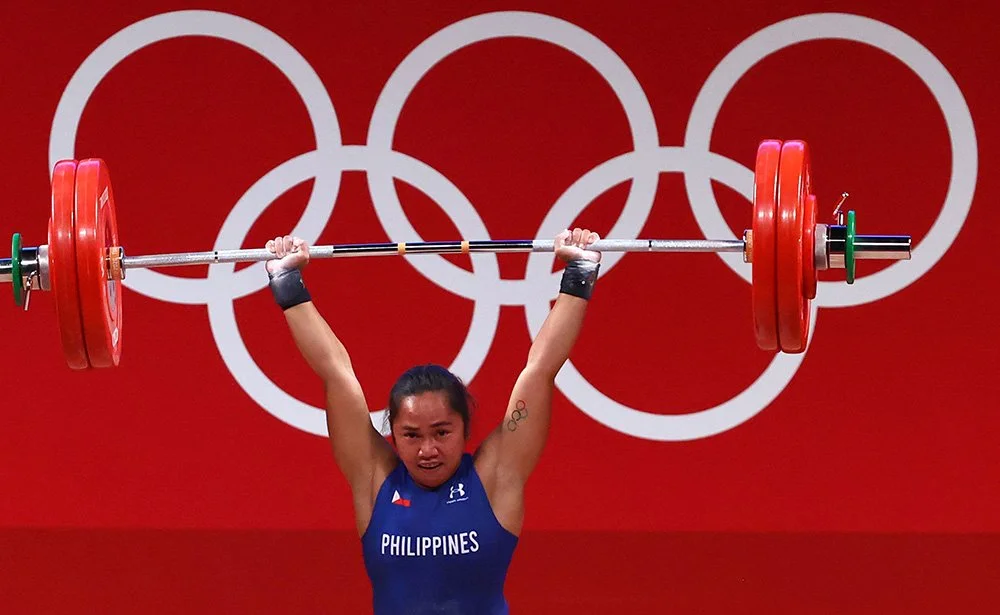Filipino Sports Greats and Hall of Famers
/The chances of a Filipino making it to the HOF in sports Pinoys are crazy about, such as basketball, are slim indeed. So far, only ten Filipinos have been named to the HOF for their sports. Pinoys in this super-elite class, apart from Torre, include boxers “Pancho” Villa, Gabriel “Flash” Elorde, and Ceferino Garcia; footballer Paulino Alcantara; bowler “Paeng” Nepomuceno, and swimmer Teofilo Yldefonso. Billiards has three -- Efren “Bata” Reyes, “Django” Bustamante, and Jose “Amang” Parica. Such is their popularity that they are recognized by first names alone.
Asia’s first Chess Grandmaster
Eugene Torre (Source: Rob Bogearts/Wikipedia)
Eugene Torre (b. 1951, Iloilo city) is acknowledged as the Philippines and Asia’s premier chess player—the first Asian to become a Grandmaster. This was in 1974, after the 23-year-old won the silver medal in the 21st Chess Olympiad held in France. In a tournament in Manila in 1976, Torre was the only one who beat the then-reigning World Champion Anatoly Karpov in a game that has become part of Filipino chess history. In 1982, he gained a spot in the World Chess Championship Candidates matches. He served as Bobby Fischer’s second in the 1992 matches against Boris Spassky. His longevity is unsurpassed. He has played on Board one for the Philippines in 18 Chess Olympiads. After participating in 23 Olympiads by 2016, Torre recorded 103 wins, 124 draws, and 43 losses, for a total score of 165 points, second over-all in Olympiad history. However, he holds the distinction of having played the most games in the history of the Olympiad with 270. Torre is the first male Asian in the World Chess HOF. He is still active in the Senior chess circuit, twice winning the Asian Seniors chess championships (+ 65 years) in 2017 and 2018. Torre was officially inducted into the HOF in Missouri on October 6, 2022, together with Judit Polgar and Miguel Najdorf.
Top Flyweight Boxer of the 20th Century
Pacho Villa (Source: Wikipedia)
Pancho Villa (1901-1925) is the First Asian to hold a World Championship Belt in boxing, and first ever elected to the International Boxing HOF. He was born Francisco Villaruel Guilledo in Negros Occidental. His father abandoned the family early, and he grew up with his mother in a La Carlota hacienda. He was adopted by boxing patron Francisco Villa, who gave him the name “Pancho Villa”, and brought him to the US in 1922. Just over five feet tall and 52 kilos, Villa was explosive and unrelenting in the ring. He fought 105 times, sometimes with as little as a week between bouts. Three months after arriving in the US he knocked out the American Flyweight champion; 10 months later, on June 18, 1923, he knocked out Jimmy Wilde of Wales, then the World Flyweight Champion, and became the first Asian to become a World Champion.
Villa defended his title several times in the US and the Philippines. Weak from the recent extraction of a wisdom tooth, Villa lost to Jimmy McLarnin in a non-title bout on July 4, 1925. Another visit to the dentist resulted in the discovery of an infection and the extraction of three more teeth. Villa ignored instructions to rest, and instead indulged in a week-long party. The infection worsened, and Villa died on July 14, 17 days before his 24th birthday.
Eric Giron reports “Pancho’s body was shipped back to Manila. The Philippines was in mourning, the streets draped in black…every shop in Manila was closed, over 100,000 paid homage at his funeral……” Pancho was elected to the International Boxing HOF in 1961, 36 years following his demise, the first Filipino to be awarded. The Associated Press named him as the top flyweight boxer of the 20th century, on a list of the top 100 boxers of the century -- the only Filipino on the list -- which includes greats like Muhammad Ali and Sugar Ray Leonard.
Flash Elorde (Source: Wikipedia)
Ceferino Garcia (Source: Wikipedia)
Gabriel “Flash” Elorde (1935-1985) and Ceferino Garcia (1906-81) are members of the two highly respected boxing HOFs -- International Boxing Hall of Fame (IBHOF) and World Boxing Hall of Fame (WBHF). Garcia is credited with popularizing the “bolo” punch. He was formerly a chauffeur and bodyguard of the actress Mae West. Elorde achieved iconic status and held the world super-featherweight title for seven years, the longest in the division’s history.
Footballer Who Made History with FC Barcelona
Paulino Alcantara (Source: FC Barcelona)
Footballer Paulino Alcantara y Riestra (1896-1964) was born to a Spanish military officer and a mestiza from Cagayan, in Concepcion, Iloilo. After the loss of the colonies, the family left for Spain in 1905. (See: http://www.positivelyfilipino.com/magazine/bend-it-like-paulino-and-friends, by Myles Garcia)
Paulino was discovered by FC Barcelona founder Joan Gamper. Alcantara is the youngest to be ever recruited by FC Barcelona, at the age of 15. He was also the first Asian to play in a European league. In his first game, he showed his worth, scoring the first three goals for the club. When the family returned to the Philippines from 1916-1918, he studied medicine, continued to play and was with the Philippine team in a 15-2 rout of Japan in the 1917 Far Eastern Games. Returning to Barcelona in 1919, he eventually became the top scorer for the club, scoring 395 goals in 399 games, a record that stood for 88 years, until Lionel Messi broke it in 2014. In 2007, he was named by FIFA as the greatest Asian footballer of all time, 43 years after he passed away.
FC Barcelona’s website notes, “His characteristic deceptive appearance (he was just 5’7”) made him popular with the fans, becoming the first star of the club in the golden ages of the twenties … His ability to hit the most powerful of shots crossed frontiers on 30 April 1922 when, in a game between Spain and France, he hit a shot so hard that it ripped right through the net. For many years after, children from Barcelona would recall that moment…”
Alcantara retired in 1927 and practiced medicine. He was FC Barcelona director in the 1930s and had a short stint as coach of Spain’s national team in the 1950s.
Father of the Modern Breaststroke
Teofilo Yldelfonso (Source: wikipedia)
Teofilo Yldefonso (1903-1942, Piddig, Ilocos Norte) was named to the HOF by the International Swimming Federation in 2009. His unorthodox style, later known as the "Yldefonso Stroke" has been adapted by pint-sized swimmers, particularly the Japanese. He is referred to as "The Father of the Modern Breaststroke" in European textbooks. His style brought breaststroke closer to the surface of the water rather than underwater, which was common during his time. Teofilo learned to swim by teaching himself in the Guisit River near his home. Orphaned at an early age, he and his brothers practically raised themselves. Around 1920, he enlisted in the Philippine Scouts. At the Far Eastern Games of 1923, 1927, 1930, and 1934, he was a standout, beating Japan’s Hall of Famers. He competed in the 1928 and 1932 Olympic Games winning the 200m breaststroke bronze medal at both Games. He is the first Southeast Asian to win an Olympic medal and the only Filipino so far to win back-to-back Olympic medals.
He was among thousands of soldiers who experienced the Death March to Capas Tarlac, where, at age 39, he died at the concentration camp. His remains have not been recovered. A monument to Yldefonso was unveiled in 2006 in the Piddig Municipal Plaza.
International Bowler of the Millennium and Philippine Athlete of the Century
Paeng Nepomuceno (Photo by Dixie Puyat)
Rafael "Paeng" Nepomuceno (b. 1957, Quezon City) is a World Bowling Hall of Famer and is the first and only bowling athlete to be awarded the prestigious IOC (International Olympic Committee) President's Trophy. He was also named International Bowling Athlete of the Millennium by the FIQ (Federation Internationale des Quilleurs) in 1999.. He won the World Cup of Bowling four times (1976, 1980, 1992, 1996), the World's Invitational Tournament in 1984, and the World Tenpin Masters championship in 1999.
He was named by the Philippine Sportswriters Association the Athlete of the Century in 1999. The Bowlers Journal International picked Paeng as its Greatest international bowler in September 2004 and also on its November 2013 100-year Anniversary issue.
At 65, Paeng rolled his 37th Sanctioned Perfect 300 game on October 16, 2022. His seven foot image is displayed in front of the entrance of the International Bowling Museum in Arlington, Texas, which hosts the HOF.
Billiards Great Triad – “Bata” Reyes, “Django” Bustamante, and “Amang” Parica
Efren “Bata” Reyes (Photo by Lito Borrias/Rappler)
Efren Reyes (b. 1954), popularly known by the nickname "Bata" is widely considered the greatest pool player of all time. A winner of over 100 international titles, Reyes was the first player to win the World Pool Association (WPA) Championships in two different pool disciplines. Reyes is a WPA World Nine-ball champion and WPA World Eight-ball Champion, a U.S. Open winner, a two-time World Pool League winner, and a 13-time Derby City Classic winner. Reyes represented the Philippines at the World Cup of Pool, winning the event with Django Bustamante in 2006 and 2009. By defeating American player Earl Strickland in the inaugural Color of Money event in 1996, Reyes took home the then largest single match purse in pool history of $100,000.
Reyes is nicknamed "The Magician" for his ability on the pool table. In 1995, Billiards Digest magazine named Reyes the Player of the Year. Billiards' own elite named him the best one-pocket player of all time. Reyes became the first Asian to be inducted into the Billiard Congress of America Hall of Fame in 2003. Bata has also won gold medals in the Asian Games and the SEA Games for the Philippines.
Francisco “Django” Bustamante (Source: Philippine Daily Mirror)
Francisco Bustamante (b. 1963, Tarlac), nicknamed “Django” because of a resemblance to the lead character in a film of the same name. He began playing pocket billiards at 10, and began competing in the United States in the early 1990s. He was named Billiards Digest’s and Pool & Billiard Magazine’s Player of the Year in 1998, after notching four major tournament wins, and he earned Billiards Digest’s and Inside Pool’s Player of the Year titles again in 2002. Bustamante finally garnered his first world title in 2010, winning the WPA World 9-Ball Championship in Qatar. He became the second Filipino inducted into the Billiards Congress of America HOF in 2010.
Jose Parica (b. 1949), the third Pinoy in the Billiards HOF, was elected through recommendation of the Veterans Committee. He won his first pro tour title in 1986. His consistent play throughout the year once earned him a $50,000 Player of the Year bonus award as the tour’s top points earner. Parica continued to rank among the game’s top players well into the 2000s.
Jose “Amang” Parica (Source: Wikipilipinas)
Many other Olympic sports have a Hall of Fame where Pinoys still have to make a mark. For example, badminton has Indonesians, Malaysians, Chinese, and South Koreans; gymnastics and volleyball have Chinese and Japanese player inductees.
One more Pinoy sure to be inducted, once he is eligible in 2024, five years after retiring, is eight-weight-division champ Manny Pacquiao, who is already a legend in his own time. Other Pinoy household names today -- like Olympic gold medalist and world champ weightlifter Hidylin Diaz, the pole vaulter EJ Obiena, Gymnast Carlos Yulo, and Fil-Am Chess prodigy Wesley So, could have chances in the decades to come should they dominate in their sports. This just goes to show how difficult it is to achieve HOF status for competitive sports, the ultimate accolade from the experts.
Manny Pacquiao (Source: Al Jazeera)
Hidilyn Diaz (Source: Reuters)
Dr. Vicente Salas is a retired public health specialist who has worked for the UN and International NGOs in over 15 countries. He is now back in his native Iloilo, after being away for 35 of the last 39 years.
More articles from Vicente Salas


